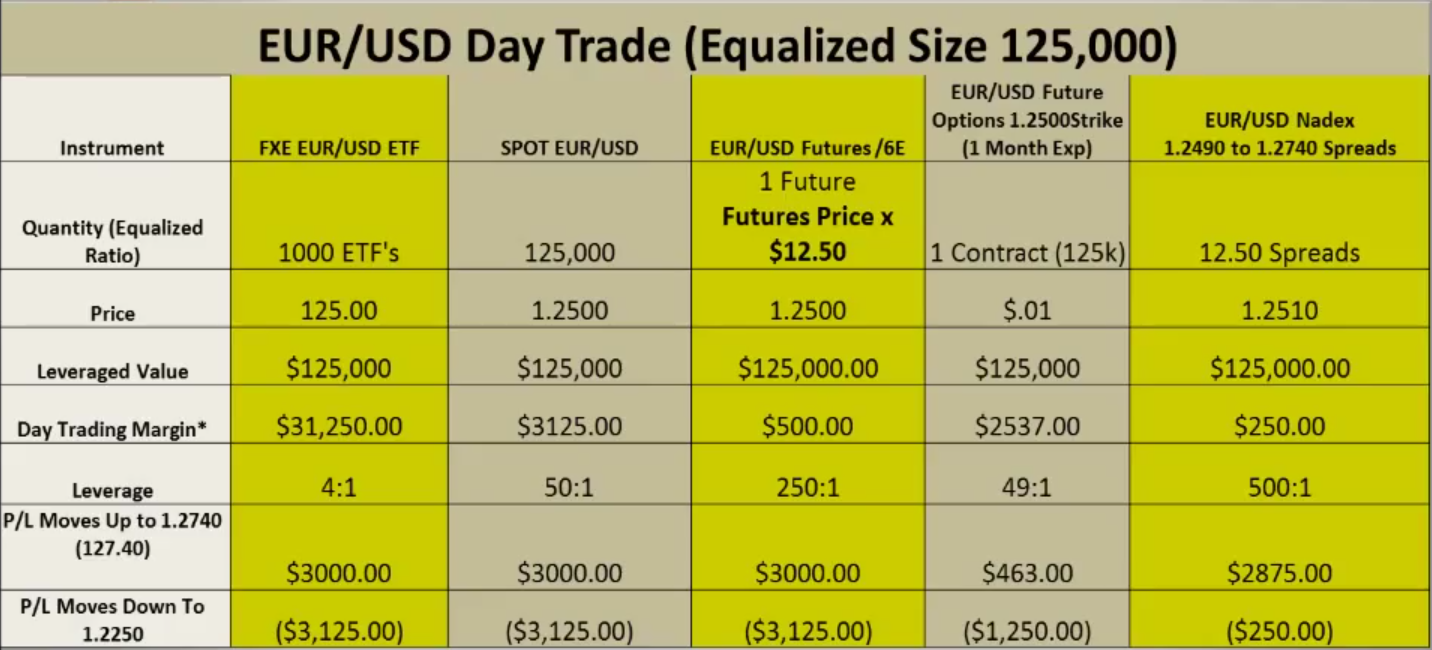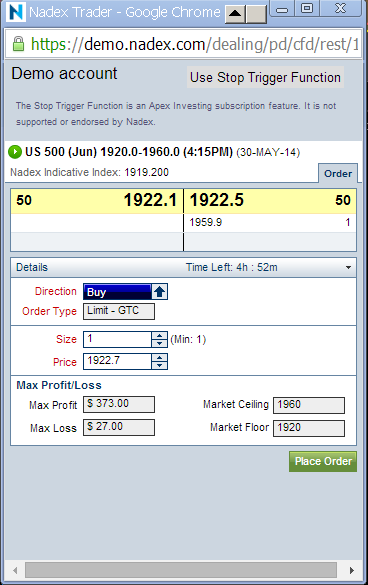By Darrell Martin
Most people know what stocks are, but many do not understand what an ETF is.
ETF stands for Exchange Traded Fund, and is just that: an investment fund traded on stock exchanges. It trades like a stock: in that traders own a share that can increase or decrease in value, and can trade it throughout the trading day. However, it’s also similar to a mutual fund – in that it holds assets like stocks, commodities or bonds. To trade ETFs, traders have similar account requirements as for trading stocks.
A Nadex spread is a short-term position, with high leverage and defined risk, that isn’t stopped out by a temporary unfavorable move. Unlike using margin for leverage to trade stocks and ETFs, when a trader uses leverage trading Nadex spreads, no matter what happens, they can’t lose any more than what they put into the trade.
It also doesn’t take much to open an account. Users only need $100 to fund an account, and only $100 to start and place a trade.
Related: Leverage With Nadex Spreads Compared To Futures Day Trading
Typically, people trading stocks and ETFs have either a cash account or what is called a Reg-T account. A cash account has no leverage, and risk is equal to what the trader puts up for the stock or ETF trade. If the stock/ETF cost $100, then that is the risk. This also limits a trader’s ability to make profits to only making profits on the $100 invested.
Frequently, people will have what’s called a Reg-T account and not even realize it. Reg-T is short for the Federal Reserve Board Regulation that governs customer cash accounts and margin accounts.
Margin is the minimum amount of cash necessary to trade using borrowed money from the broker. The Reg-T account allows traders to get two times leverage. If a trader wants a $100 stock, they only have to put up $50 and borrow the other $50 from the broker. Of course, the broker will charge interest on that borrowed amount.
Leverage is the use of margin to increase the potential of return. While increasing leverage can be a good thing, using margin can be a double-edged sword. Traders have potential for an increase in profits using leverage, but also works the other way and creates potential for an increased loss.
Related: Excellent Leverage With Nadex Spreads, Compared To Future Options
With margin accounts, traders can also have margin calls. This is when the broker increases the margin requirements for the account, and the money must be deposited into the account by a certain time. If the money is not deposited, the positions can be sold to cover the margin call. Brokers can increase the minimum margin amounts or make a margin call at any time.
For traders who want to day trade stocks, a $25,000 account size is needed. To open a Nadex account and begin to trade spreads, a trader only needs $100. There are also no account minimums or margin calls with Nadex.
A Nadex spread has a defined floor and ceiling for the trade. There is no additional profit or loss past the floor and ceiling levels. Therefore, the max risk on a long trade is the distance between the entry price and the floor, and the max risk on a short trade is the distance between the entry price and the ceiling.
The max possible risk is the cost of the trade. When a trader enters a Nadex spread, they put up an amount equal to the max possible loss on the spread traded. Traders don’t have to worry about a call that their account is negative.
To better understand the max possible risk in relation to leverage with Nadex spreads, there is an example of an equalized day trade going long on the EUR/USD below. While the instruments are not specific stocks, the example using ETFs EUR/USD, can still show the excellent leverage ratio with Nadex Spreads and compare max risk. Leverage can be an efficient use of capital.

Comparing the FXE EUR/USD ETF and the EUR/USD Nadex Spread, it can be seen that 1,000 ETFs are equal to 12.5 Spreads. To trade those 12.5 spreads, the day trading margin and cost is only $250, while the ETF’s cost would be $31,250.
If the price went down to 1.2250, the max loss for the Nadex spreads would only be $250, while the loss on the ETFs would be $3125.00. With the Nadex spreads, the leveraged value is $125,000. A trader only needs to put up $250. That’s a leverage of 500:1, and the risk and cost is still only $250.
The ETF’s leverage was 4:1 and still had a loss of $3125.00. The Nadex spreads would profit $2875 on a full favorable move while the ETFs would profit $3000; almost the same amount.
Even though particular stocks cannot be traded with Nadex spreads, traders can trade U.S. and foreign Indices, commodities and currencies. Nadex offers spreads of various distances or widths, with different time frames and they can be traded around the clock.
The trade ticket below shows an example of a Nadex Spread for the U.S. 500, which is a derivative of the E-mini Future S&P 500. The market ceiling and market floor of the spread can be seen on the ticket, both at the top and the bottom, along with the max profit and max loss of the trade. The max loss is also the cost of the spread. In this example, if a trader thought the market was going to go up, they could buy this spread for $27, which would also be the max loss on the trade. The max profit potential however is $373, assuming only one contract was traded.

For more information on Nadex spreads and how to trade them and get access to the free spread scanner, go to www.apexinvesting.com.
To practice trading spreads on a free demo account, go to www.nadex.com and click on trading demo, trading account.
See article on Benzinga
